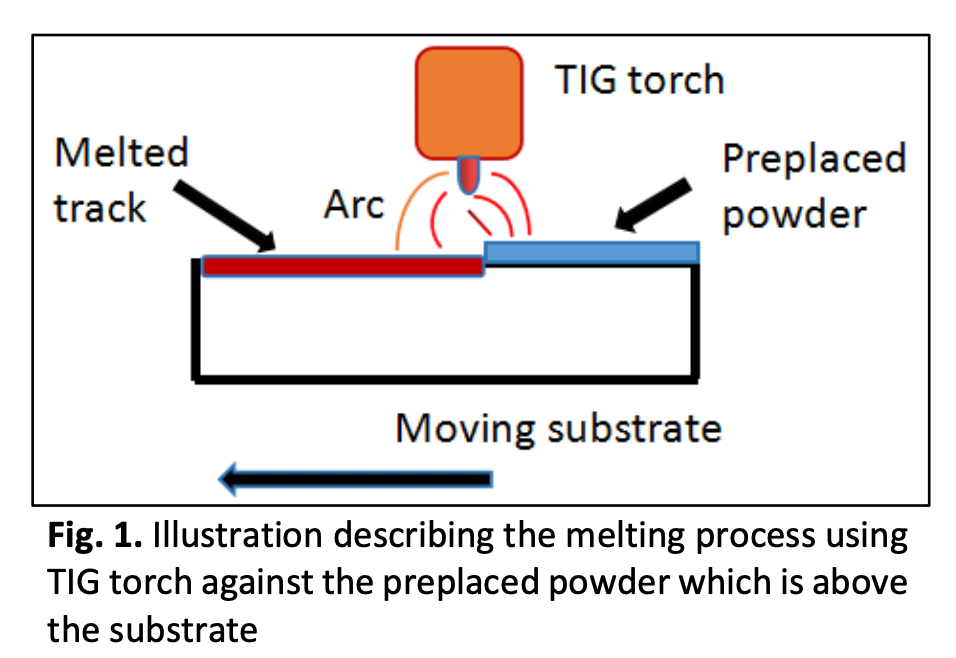The Influence of TiC Dispersion and Density on the Microstructural Features and Microhardness Fused by TIG Arc Process
DOI:
https://doi.org/10.37934/aram.114.1.3342Keywords:
TIG arc, TiC, Steel, PreplaceAbstract
Surface hardening is a technique to modify a thin layer on the substrate serving the purpose to resist annihilation from the wear and corrosion conditions. In this work titanium carbide (TiC) particulates was incorporated on the surface of the AISI 4340 low alloy steel at different content and heat inputs using the tungsten inert gas (TIG) melting process. The examined melt sizes, microstructures, defects and microhardness were reported. It was found that all tracks were free from crack defects with each track possessing sound metallurgical bonding to the substrate. The containment of majority undissolved TiC followed by the reprecipitated ones were densed when melting was conducted at 2160 J/mm between 1mg/mm2 to 2 mg/mm2 powder. The reprecipitated mostly the globular and flower type microstructures were seen dispersed and surrounded by overwhelmingly more of the Fe matrix fused at 1008 J/mm between 0.4 mg/mm2 to 0.5 mg/mm2. The arc was constricted to allow extensive dissolution when higher 1 mg/mm2 to 2 mg/mm2 powder were used and so dissolution and reprecipitation was poor. The populated undissolved TiC above 1 mg/mm2 deemed for the demarcation hardness trends which were evident by sudden dropped from above 1400 HV to ~ 900 HV and rised back to 1050 HV. Dissolution of substrate and particulates were enhanced with higher heat input associated with lower powder content.
Downloads


























